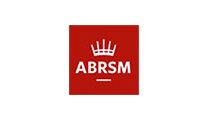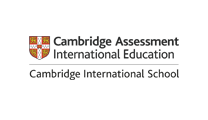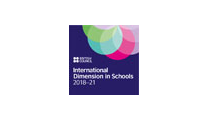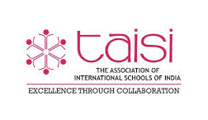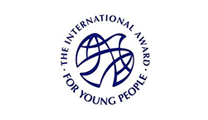Pre-Primary
Primary
Key Stage 1 & 2
Year 1-5
Secondary
Key Stage 3 to 5
National Curriculum of England and Wales, Cambridge Lower IGCSE and Advanced International AS & A Level


Pre-Primary
Under The Early Years Foundation Stage of the Montessori Education, we engage with children below 5 years of age and focus on 3 prime and 4 specific areas of learning. The prime areas of learning include Personal, Social and Emotional Development (PSED), Communication and Language (CL) and Personal Development (PD) while the specific areas of learning include Literacy, Mathematics, Understanding the World and Expressive Arts and Design.
WHAT’S SPECIAL ABOUT
In a Montessori program, the subject matter is interrelated through over-arching cultural themes. Reading, writing, science, history and other subjects are tied together. Modern brain research affirms that connecting knowledge in this way is the most effective method for humans to learn and retain information. This integrated approach is one of the Montessori curriculum’s greatest strengths. Studies come alive through a host of hands-on projects and activities.
To Montessori teachers, presenting a lesson to a child is an art form. For example, for the 3-6 age child, we captivate the child’s attention by talking very little during the lesson and instead of making our movements slow and deliberate. This allows the child to focus on our actions and remember the little details that may be forgotten if we were speaking at the same time. One of the classic Montessori lesson techniques you might want to investigate is called The Three Period Lesson.
TEACHING - Learning Approach
Dr. Montessori developed a philosophy based on children’s natural development and they're intrinsic desire to explore, discover and learn from the world around them. Children learn directly from the prepared environment, and from other children—rather than from the mentor. The Montessori method of teaching is a modern educational movement that encourages teachers to view children and classroom education differently than the common teacher-student relationship. Instead of focusing on academic education, the Montessori method focuses on respecting and encouraging each child's individual differences, providing a nurturing environment to teach social interaction and emotional skills.
Because classrooms are multi-age, they are able to support a broader spectrum of learning levels. Montessori lessons are carefully presented and thoughtfully supported with classroom materials. Students may then absorb the subject matter on a number of planes and are encouraged to apply their learning across multiple disciplines. Students go beyond memorization and repetition to true understanding and application of knowledge, skills, and concepts. She is facile in the basic lessons of math, language, the arts and sciences, and in guiding a child’s research and exploration, capitalizing on interests and excitement about a subject.
The child is scientifically observed, observations recorded and studied by the teacher. Children learn from what they are studying individually, but also from the amazing variety of work that is going on around them during the day.


- Principle 1: Respect for the Child
-
Respect for the Child is a major principle underlying the entire Montessori method. This is the underlying principle within every activity, be it working with apparatus, outdoor play and meal times. Montessori helps children learn how to learn. We operate from the understanding that intelligence, creativity, and imagination can be found in every child. The true challenge of education is to keep the spark of human intelligence and curiosity alive. The teachers create captivating lessons and fascinating materials so that learning does not need to be forced.
It is shown by:- By building they're self -esteem as we present activities in social graces and practical life which enable the student to move and function with dignity.
- By not interrupting their concentration. Allowing the child to go by his/her pace and wait patiently till they complete their task.
- Respect is also shown by giving pupils the freedom to make choices, to do things for themselves, and to learn for themselves.
The child is scientifically observed and the observations are recorded and studied by the teacher. Children learn from what they are studying individually, but also from the amazing variety of work that is going on around them during the day. - Principle 2: The Absorbent Mind
-
“The ‘absorbent mind‘ welcomes everything, puts its hope in everything, accepts poverty equally with wealth, adopts any religion and the prejudices and habits of its countrymen, incarnating all in itself. This is the child!”– The Absorbent Mind.
An Absorbent Mind is defined as when a child is “effortlessly assimilating the sensorial stimuli of the environment”. Analogies for this idea are a sponge soaking in everything within the environment and a camera snapping images of everything it sees through the lens [Mneme]. These impressions remain forever in the subconscious and conscious self. These are the formative years and the learning during these years make the child the man he is to become. We call this process the absorbent mind and ensure the right stimuli is provided to the child in speech, movement, art, music, and cognitive learning. - Principle 3: Sensitive Periods
-
“Impressions do not merely enter his mind, they form it, they incarnate themselves in him.” – The Absorbent Mind
Montessori pedagogy believes that during these formative years, the child’s “Windows for learning“ are open. The child has a super energy, a zest [horme] which extinguishes if the right stimuli are not provided. For example, a child picks up speech at this stage and if he/she is not provided with a conducive environment for speech development then there can be lasting speech damage. Sensitive periods are “blocks of time in a child’s life when he is absorbed with one characteristic of his environment to the exclusion of all others”. E.M. Standing writes, “Montessori observed sensitive periods in the child’s need for order in the environment, the use of the hand and tongue, the development of walking, a fascination with minute details objects, and a time of intense social interest.” These are periods where the child is aware and is sensitive to the following:
- Sense of order
- Sense of language
- Sense for order
- Sense for small objects
- Sense for senses [smell, touch, feel, hear, taste]
The Montessori curriculum includes activities to directly address these periods. Montessori students learn through sensory-motor activities and by working with materials that develop their cognitive powers through direct experience: seeing, hearing, tasting, smelling, touching, and movement. - Principle 4: The Prepared Environment
-
Montessori classrooms are beautifully crafted environments designed to meet the needs of children in a specific age range. Dr. Maria Montessori discovered that experiential learning in this type of classroom led to a deeper understanding of language, mathematics, science, music, social interactions. The Montessori method considers both the animate and the inanimate surroundings. The classroom is a prepared environment structured in a way where the pedagogy and the curriculum activities are integrated. The characteristics of the environment are based on the needs of the children and provide a structured environment based on physical, intellectual, social and emotional characteristics.
The five principles are- Structure and order
- Freedom
- Beauty
- Nature & reality
- Social environment
The method believes that the environment itself is the best teacher, and we prepare it just like a mama bird would craft a proper nest for her babies. Rather than dictating what and when a child should learn, we design the classroom or home to fit the needs of the child i.e. rich experiences balanced by beauty and order. This takes a great amount of effort, but we are rewarded when a child enters and is inspired to learn. In a typical Montessori classroom, you would see objects in baskets, trays, or boxes arranged on a shelf attractively. Each work contains a purposeful work that is designed to teach specific concepts. - Principle 5: Auto education
-
Montessori observed that children are capable of educating themselves and named this phenomenon auto education (also known as self-education). Children who are actively involved in a prepared environment and who exercise freedom of choice literally educate themselves. Montessori teachers prepare classrooms so that children educate themselves.
This is one of the most important beliefs in the Montessori method. One of the core principles of Montessori education is to instill a love of learning in students. Maria Montessori believed that we all possess an innate curiosity and a strong internal drive to learn. To nurture these self-motivational instincts in a student, Montessori teachers act as guides, carefully observing students, and skillfully presenting material to support key concepts.
- Natural and life-supporting environments for the child
- In Montessori education, the role of the teacher is to guide children in their learning without becoming an obstacle and without inserting themselves too much into the natural learning process.
The first Montessori school opened in 1906 in Rome and thereafter Montessori schools spread in all parts of the world. Ring World War II.
The teacher is passive and the child is active. The teacher is a guide, allowing experimentation, discovery, and analysis without adult intervention. The teacher has faith in the child’s inner powers of construction and provides the child with opportunities that are vital to them, while at the same time watching the spontaneous interests and allowing the child to pursue them.
In Montessori education, the role of the teacher is to guide children in their learning without becoming an obstacle and without inserting themselves too much into the natural learning process.

